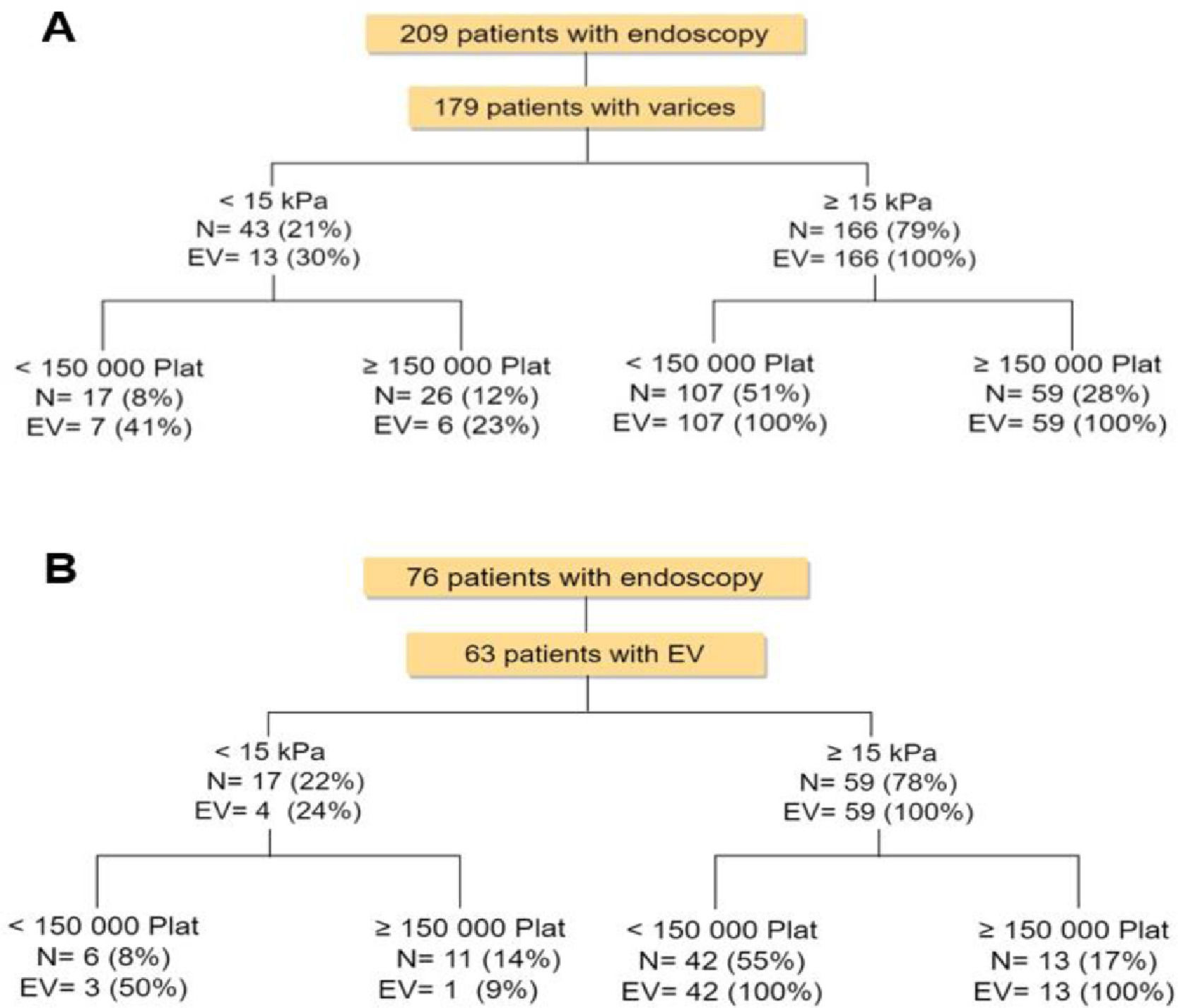
Abstracts of the 2022 Annual Meeting of the ALEH
More infoCirrhosis is the main cause of patient hospitalization and esophageal variceal bleeding is the most serious decompensation. In recent years, transient elastography (TE) has been shown to be a useful tool for the diagnosis and management of esophageal varices (EV). The purpose of this study was to validate the Baveno VII criteria in patients with chronic liver disease in order to exclude the presence of EV.
Materials and MethodsA retrospective study was conducted with cirrhotic patients who underwent upper endoscopy and TE from January 2017 to December 2019. ROC analyses were conducted to determine cut-off values for ruling out EV. We evaluated the performance of the Baveno VII criteria (liver stiffness measurement (LSM) <15 kPa and platelet count >150 × 109 cells/L) for the identification of EV and sparing endoscopies.
ResultsThe study included 209 patients. The mean (SD) age was 59.4 (12.9) years, the mean MELD-Na was 11.7 (4.5), the mean platelet count value was 148.3 (75.2) x 109cells/L and the mean LSM was 27.21 (14.6) kPa. The prevalence of EV was 85.6% and the most frequent etiology of cirrhosis was MAFLD (63,6%). Considering all etiologies, the Baveno VII criteria showed a sensitivity of 96.7% (95% CI 92.3-98.8%) and a negative predictive value of 76.9% (95% CI 56.4-91%) for excluding EV. However, when MAFLD patients were excluded, the Baveno VII criteria presented a better diagnostic performance [sensitivity of 98.4% (95% CI 79.2 – 99.2%) and negative predictive value of 90.9% (95% CI 79.2 – 99.2%)]. Additionally, the Baveno VII criteria would allow sparing 14% of upper gastrointestinal endoscopies with a risk of 9% of missed esophageal varices.
Conclusions: The Baveno VII correctly identified esophageal varices in cirrhotic patients without MAFLD of our cohort, allowing us to avoid up to 14% of upper endoscopies with a low risk of missed esophageal varices.











